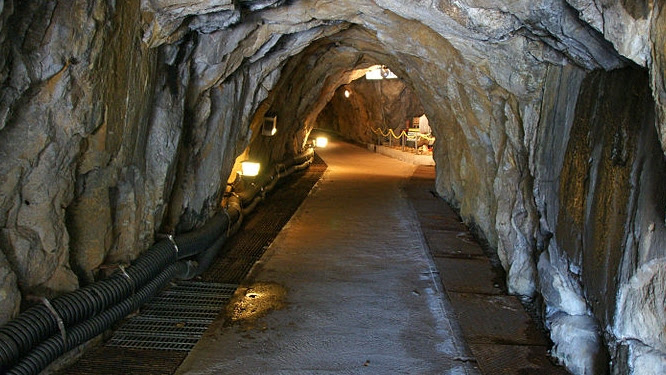
Silver mines aren’t pulling the same amount of metal out of the ground as they used to,
which means less and less silver is coming to market.
Why is less silver coming out of the ground? There are a number of reasons, but there’s one in particular that has sidestepped the notice of most investors, and it may surprise you to find out just how bad the situation has gotten. Let’s look at that reason and what it means for you...
Of course, long-time readers have heard me outline before that new supply from silver mining is locked into a structural decline.
“Structural,” meaning there are barriers and impediments embedded into the silver mining industry itself that cannot be easily or quickly changed.
They can’t just flip a switch and reverse years of problems.
This has ramifications for us investors—which are all good if you hold physical metal. Here’s what I found…
Silver Grades Are Plummeting
The firm ResearchGate.net examined the grades of the 12 biggest primary silver mines in the world. They specifically measured the “mill feed” grade, which is the grade of the ore going into the mill. Their data only goes through 2016, but look what has happened to the average grade of these deposits over the past 10 years.

The average grade from the 12 largest silver projects in the world has declined a whopping 36% in just one decade!
This is one big reason why new supply of silver has rolled over and begun a global decline. If you have less metal to dig up, less metal goes to the market.
Why are ore grades lower?
This is one big reason why new supply of silver has rolled over and begun a global decline. If you have less metal to dig up, less metal goes to the market.
Why are ore grades lower?
One reason is due to what’s known in the industry as “high grading”…
When silver prices fell off a cliff in 2013, many companies began to high grade—digging up the richest portions of their deposits—in order to maintain production levels and earnings.
But what this did was leave only the low grade ore behind—and much of the low grade ore is only feasible when mixed with the high grade stuff.
Now it will take substantially higher silver prices to make that ore economic, and in some cases it never will be.
This phenomenon has affected company reserves, too. Reserves are basically the amount of metal the company has in the ground. This legal term carries the highest confidence rating in how many ounces a company really has.
Check out the decline in reserve grades of the same silver mines.
When silver prices fell off a cliff in 2013, many companies began to high grade—digging up the richest portions of their deposits—in order to maintain production levels and earnings.
But what this did was leave only the low grade ore behind—and much of the low grade ore is only feasible when mixed with the high grade stuff.
Now it will take substantially higher silver prices to make that ore economic, and in some cases it never will be.
This phenomenon has affected company reserves, too. Reserves are basically the amount of metal the company has in the ground. This legal term carries the highest confidence rating in how many ounces a company really has.
Check out the decline in reserve grades of the same silver mines.

Reserve grades from the 12 largest mines in operation today have declined nearly 40%. This would be an incredible drop for any sector. You can’t have this kind of falloff and not expect there to be no consequences.
Other projects are coming online that could slow this trend (and you could potentially profit from some of them), but it will take a LOT of them, ones with big and rich deposits, since this downtrend is in such an unrelenting downward spiral.
Okay, you might ask, what about “resources?” Resources, like reserves, are an estimate of ounces in the ground, but are classified at a lower confidence rating than reserves. They still have a “reasonable prospects for economic extraction,” but companies try to “prove them up” into reserves, because it increases the confidence is exactly what a deposit contains and thus opens the door to more investors.
So if resources have higher grades, we wouldn’t have much to worry about, because future reserves will likewise have higher grades.
But that ain’t the case, as the red line shows…
Other projects are coming online that could slow this trend (and you could potentially profit from some of them), but it will take a LOT of them, ones with big and rich deposits, since this downtrend is in such an unrelenting downward spiral.
Okay, you might ask, what about “resources?” Resources, like reserves, are an estimate of ounces in the ground, but are classified at a lower confidence rating than reserves. They still have a “reasonable prospects for economic extraction,” but companies try to “prove them up” into reserves, because it increases the confidence is exactly what a deposit contains and thus opens the door to more investors.
So if resources have higher grades, we wouldn’t have much to worry about, because future reserves will likewise have higher grades.
But that ain’t the case, as the red line shows…

Комментариев нет:
Отправить комментарий